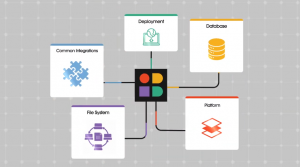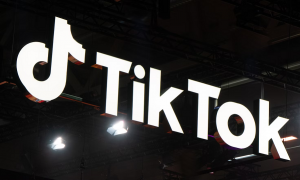Puppet Labs gives the reins to DevOps with enhanced server and tools
![]() This morning Puppet Labs unveiled a new features its DevOps automation software and a constellation of new company initiatives during PuppetConf 2014. The major updates to the Puppet open source and commercial platforms includes an all-new Puppet Apps platform, new management and reporting capabilities, and a major update to the Puppet language.
This morning Puppet Labs unveiled a new features its DevOps automation software and a constellation of new company initiatives during PuppetConf 2014. The major updates to the Puppet open source and commercial platforms includes an all-new Puppet Apps platform, new management and reporting capabilities, and a major update to the Puppet language.
Puppet Labs CEO Luke Kanies revealed that the new Puppet version 3.7 improves overall performance by up to 300 percent. The update, he says, increases efficiency, stability, and flexibility for IT teams looking to automate deployment.
Speaking to SiliconAngle, Kaines said that the platform update represents the next gen Puppet server that takes into account the ever increasing role of cloud and virtualization in the enterprise as well as a notable increase in scale. He said that it’s becoming more common for enterprise users to scale to 50,000 nodes from 1,000 to 5,000 in previous years. This need for increased scale has led Puppet to work on increasing stability and flexibility at scale to match.
Flexibility with Puppet Apps
The Puppet Apps feature set is designed to allow developer and users to innovate quickly around core features with purpose-built applications that focus on solving IT automation challenges. While Puppet Apps work directly with the Puppet platform, they are released independently and therefore can allow for frequent updates to keep up with changing industry needs.
Node management and reporting in the hands of DevOps
With the Puppet Node Manager DevOps teams will have a better hands-on role when issuing and engineering automation for deployment. This update also adds new role-based access controls and increased granularity on Puppet server reporting with a profiler and metrics service.
The Puppet Node Manager makes it simple to orchestrate a large number of frequently-changing systems by allowing admins to manage systems based on their role rather than simply their names. Meaning that admins can set roles for different segments of infrastructure and then manage that infrastructure based on rules that then percolate through the system.
Security via role-based access control has also been added to Puppet Enterprise using granular RBAC capabilities—making sure the right people are the only people who affect mission critical changes—and it integrates directly with standard directory services including Microsoft Active Directory and OpenLDAP.
The role-based access control hooks directly into the Puppet Node Manager and will also be available to Puppet Apps and subsequent services.
Reporting is delivered via a system named Puppet Server Reporting, available with Puppet Enterprise, which adds a profiler and a metrics service to analyze and visualize everything that happens on the Puppet Server. The back end includes a UI and control panel that breaks down every action taken on the Puppet backend that displays a wide variety of metrics, including active requests, request duration, execution times, and compilation load.
The metrics are available for export to numerous third-party reporting and alerting apps such as those that support JMX, and the popular Graphite server.
Updates to the Puppet language
One thing that makes Puppet distinct from other DevOps automation tools is that Puppet uses a simple, domain-based programming language to enable configuration and descriptive infrastructure management. The language, also called Puppet, received several major enhancements with this newest update that greatly increases its functional and orchestration capabilities.
The enhancements include better usability, completeness and consistency of the language. Specifics include the addition of iterators, making it possible to do common data transformation and reduce manual repetition; the addition of a new data-type system that does parameter checking; the addition of Templates that can be written in Puppet instead of Ruby, making template writing easier; and finally the addition of enhanced error handling that will allow for easier root-cause investigation with more accurate reporting.
A message from John Furrier, co-founder of SiliconANGLE:
Your vote of support is important to us and it helps us keep the content FREE.
One click below supports our mission to provide free, deep, and relevant content.
Join our community on YouTube
Join the community that includes more than 15,000 #CubeAlumni experts, including Amazon.com CEO Andy Jassy, Dell Technologies founder and CEO Michael Dell, Intel CEO Pat Gelsinger, and many more luminaries and experts.
THANK YOU











